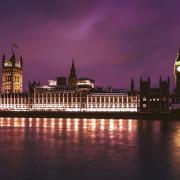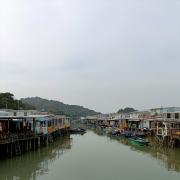
Tate Modern’s ‘Magic Realism: Art in Weimar Germany’ exhibition celebrates the witty, timely and often political artwork of the 1920s. It can be argued that the Weimar period set the pace for modern times: this was the Germany of the kabarett, of sexual emancipation, of traffic on the Alexanderplatz. Yet it was also the Germany of poverty and inflation. The Tate’s exhibition shows the conflict of the Weimar years, and does not shy away from presenting the depression behind the gilt and humour.
When the Nazis – ever the curators - opened the ‘Degenerate Art Exhibition’ in 1937 - an exhibition filled with all the Weimar years’ decadent artistic output - they labelled the painters as dangerous radicals. In fact, they were far from it. They were social commentators, often ingenious, sometimes disturbing - but the art experimented mostly politically. Even now, these artists are remembered in the context of their time, in a way that painters that steered clear of political themes are not. All the more reason to celebrate the Weimar painters, then: they are both the products and the critics of an era, men and women intelligent enough to understand the political climate, witty enough to subvert it, and talented enough to make seeing their artwork worth our while.
The exhibition contains some of the Weimar era’s most famous names. Gerorge Grosz’s painting, ‘Suicide’, is one of the most disturbing artworks on display, yet it carries all the ingredients that defined the Weimar Republic: depression, sexual licentiousness, the ghost of values past. In the foreground, two men lie dead, having killed themselves; a prostitute looks on from the window; and ironically, in the distance stands a church - symbolising how out of touch ‘Old Germany’ is in the modern world.
There are also works by lesser-known artists, such as Jeanne Mammen and Albert Birkle. They too touch on Germany’s newly-found glamour, but look longer, and you’ll see the depression that was eating it up hanging over the paintings. The disappointment of Germany not only being defeated in the First World War but also being blamed for starting it affected Germany’s morale enormously. As George Grosz put it, “the proud German soldier had turned into a defeated bundle of misery”. The reparations Germany would have to pay almost destroyed its economy. In this environment, a new cynicism took hold of the people and perverted them. For perhaps the first time ever, art grew sick of its own righteousness and mirrored the deplorable climate of its time, without aspiring to ennoble or beautify it.
‘Magic Realism: Art in Weimar Germany’ is on until 14 July 2019 at the Tate Modern, London


























